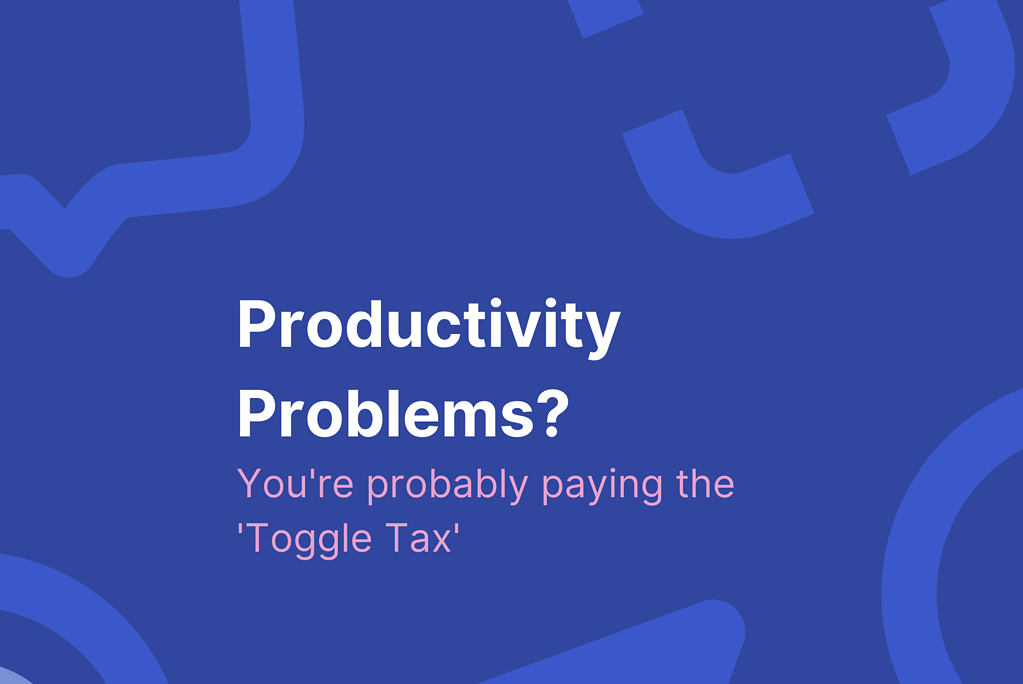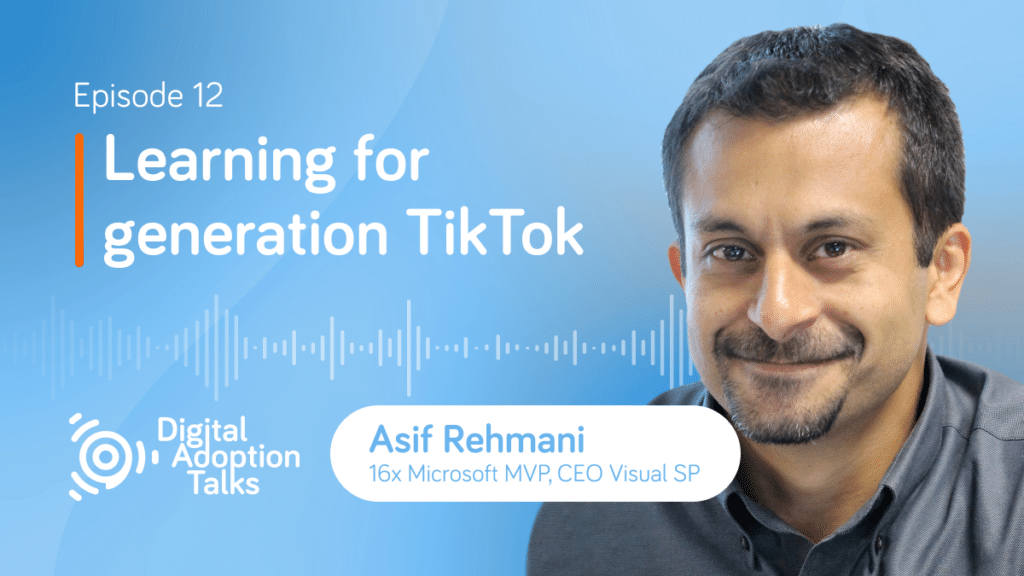Productivity is taking a hit
Digital adoption is a crucial element of the modern workforce, and it’s a term that is being taken more seriously than ever before. Asif Rehmani, CEO of Visual SP, is a digital adoption expert and 16-time Microsoft MVP who focuses on enhancing employee experiences, increasing user adoption, and reducing support expenses. He’s giving us the inside details of the ‘Toggle Tax’, an often overlooked inefficiency that is slashing productivity in the modern workforce.
In a recent episode of the Digital Adoption Talks Podcast, he explains the toggle tax as the resulting productivity loss due to users bouncing back and forth between systems and wasting valuable time as they re-train their attention between systems, also known as context switching.
Context switching is a hidden drain on resources for many organizations today because of the increasing number of systems used for daily operations. When employees have to constantly switch between systems, it creates too many options and distractions for users, inevitably wasting time and resources.
The Toggle Tax basically says I’m toggling as a user back and forth from SAP to SharePoint to Salesforce to Viva Vault to whatever else. And when that happens, there’s the actual measurable productivity drop.

Asif Rehmani
16x Microsoft MVP, CEO Visual SP
How much time and energy do we waste toggling back and forth between applications?
People don’t say numbers don’t lie for no reason. Studies reveal that the toggle tax is real, it’s a drain, and organizations must have a strategy to combat it. Switching context from one application to another distracts users. In fact, according to the Harvard Business Review, users spend up to 4 hours a week transitioning between applications. This adds up to a whopping 9% of total time or 5 working weeks per year.
So, now the question is: How do organizations enable their employees to take their time back and increase performance?
Overcome the toggle tax by focusing on performance support
While cloud computing has made computing easier, it has not necessarily made it easier for users. Especially because the complexity of applications has grown and requires more training and support for end users of software systems. The focus should be on performance support, helping knowledge workers get their job done in the moment of need. A carefully-calibrated combination of traditional training and in-app help can increase user satisfaction, career progression, and decrease the productivity drain.
The trend moving forward is towards performance support, which is training that happens in the flow of work and is not disruptive to the user’s productivity.
However, the challenge with traditional training is that it is difficult to keep up with the frequent updates and deployments of the 178 apps that the average enterprise has, which can be overwhelming for employees.
Unique partner opportunity for providing digital adoption strategy
Digital adoption is important for partners to prioritize, but it can be difficult to measure and requires a new set of resources with a learner’s background. User adoption should be treated as a continuous service rather than a one-time project, and empathy is important for partners to show their customers that they care about their success.
The end goal of digital adoption is the most important thing, as it is useless if actual users do not use the product or service.
How to combat the 'Toggle Tax'
To combat the drain on resources, information needs to be easily accessible to users in so they can do their jobs effectively. The combination of macrolearning and contextual micro-learning is a great way to support current and future learners and information workers.
Inside Microsoft, the concept is basically, ‘But it’s a web app, right? You don’t really need training.’
Look, you packaged your entire framework up with 140 different functions you can perform in order to be highly productive, and you’re telling me you don’t need training on that?
The complexity of the application is growing.

Joachim Schiermacher
CEO, ClickLearn
Support users with contextual learning
While the average business keeps piling on system after system, apps that aren’t useful or user-friendly are easier than ever to delete and quickly fall by the wayside. Customers expect to be able to try out and to delete apps easily if adoption decreases or declines in a certain system.
To properly support users and decrease drains on productivity caused from switching between systems, Rehmani recommends a solution comprised of contextual microlearning, micro support, and micro communication systems to support digital adoption.
In the end, because of the sheer number of apps required to complete job functions, most enterprises are paying the hidden ‘toggle tax.’ The key to beating this productivity drain is to prioritize digital adoption, making it a continuous service with the ultimate the end goal of better user adoption –and less toggling back-and-forth between systems.
- Podcast e13
Asif Rehmani is a veteran in the Microsoft ecosystem celebrating his 16th year as a Microsoft MVP. He talks with CIOs all over the world about digital adoption, enhancing employee experiences, and increasing user adoption, all while reducing support expenses.
He discusses the increasing complexity of computing and cloud computing, how performance support and traditional training are important for user adoption, and the challenge of keeping up with the 178 apps that the average enterprise has.
Listen to this to discover how to achieve digital adoption success!

